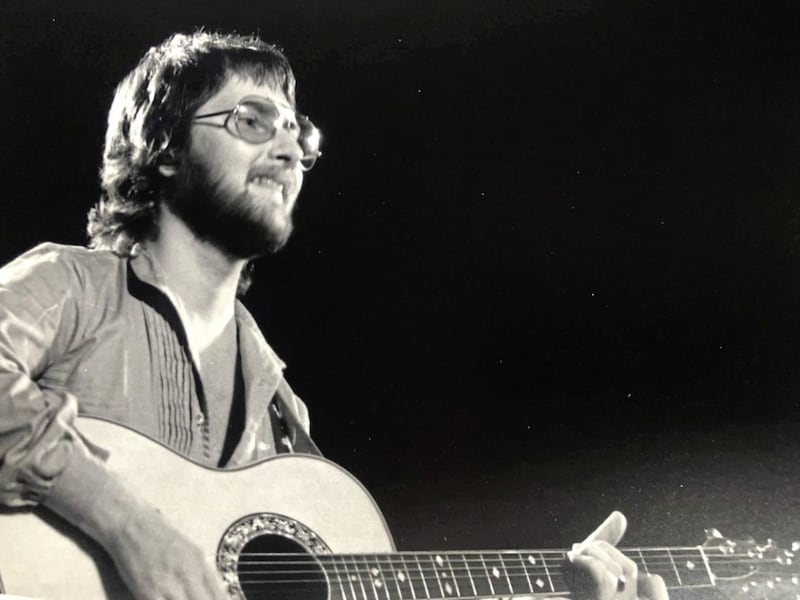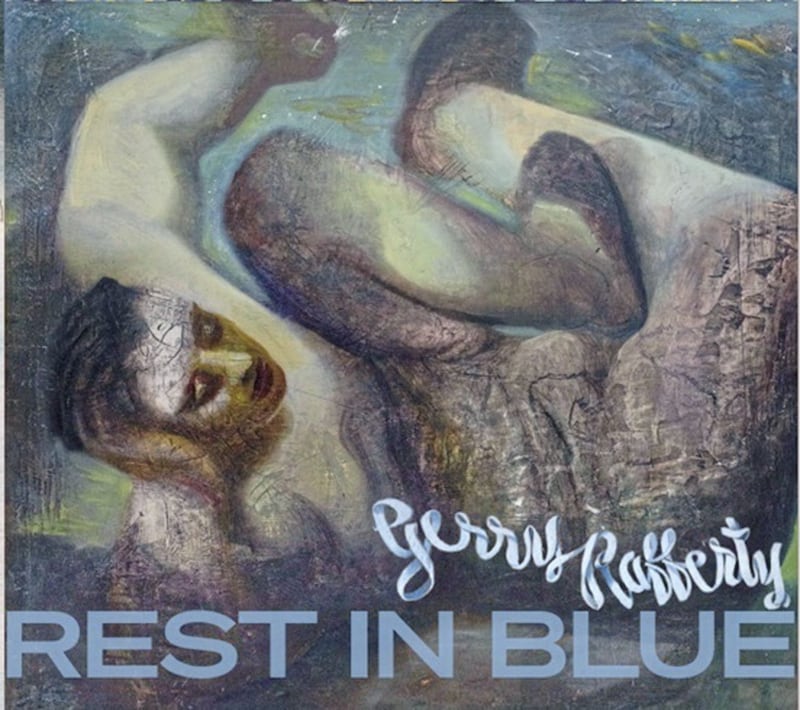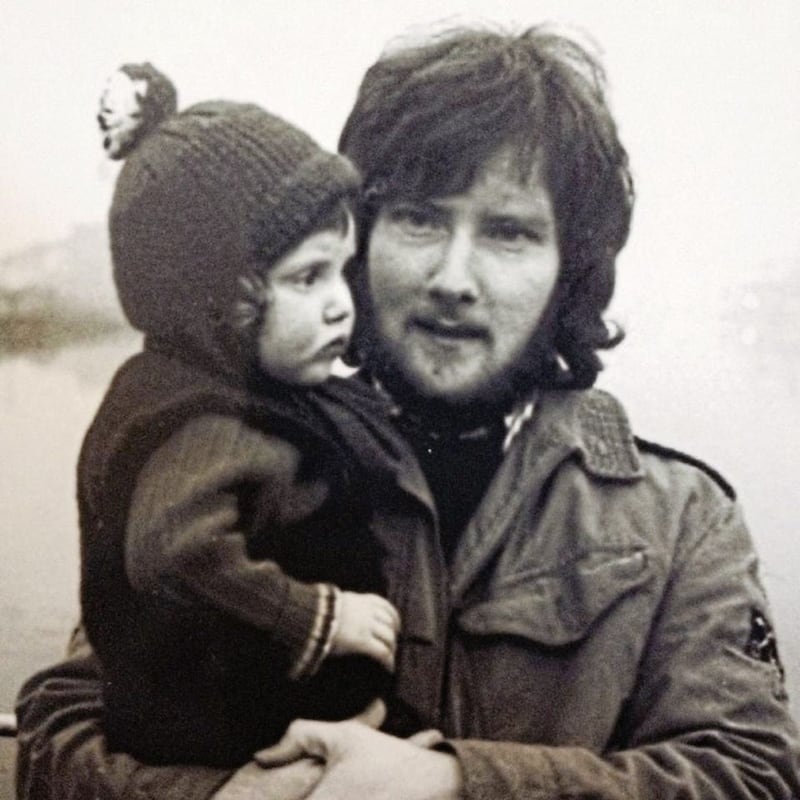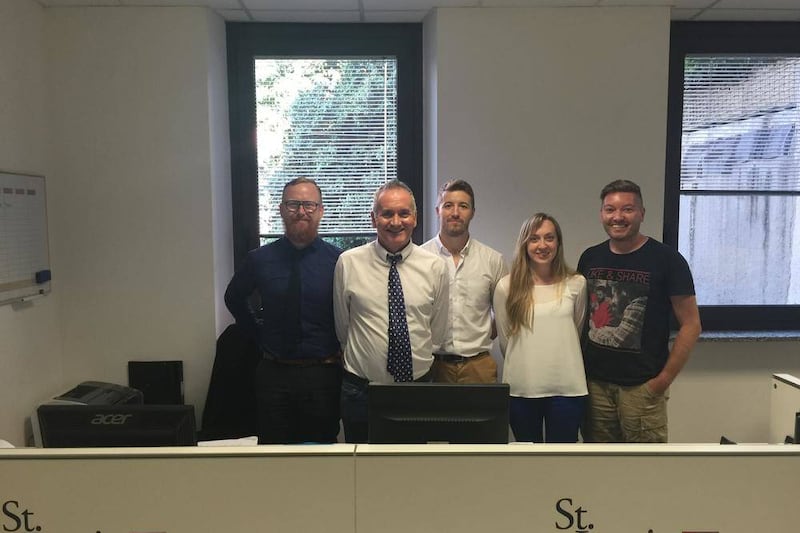
GERRY Rafferty was born in Paisley, near Glasgow, to an Irish father and Scottish mother, who brought him up in a rich tradition of Scottish and Irish folk music.
Rafferty died in 2011, aged 63, but his 14th solo album has just been released, thanks to his daughter Martha compiling the posthumous Rest In Blue.
The new collection features Rafferty's take on Wild Mountain Thyme; although the song has Scottish roots it was adapted by Belfast musician Francis McPeake and has been covered by a range of artists including Van Morrison who recorded the track as Purple Heather.
"The vocal was so outstanding," explains Martha, "he loved traditional music and sang it so well. I wanted it to sound the way I remember him, which was around the table singing with some of his friends or with family."
The stirring vocals from Rest In Blue led Billy Connolly to comment: "I've never heard Gerry sing so well. He never fails to amaze me."
Rafferty's take on Ewen MacColl's Dirty Old Town greatly differs from the version popularised by The Pogues in 1985.
"The arrangement is sparse, like Ry Cooder on the Paris, Texas soundtrack," adds Martha.
Barbara Dickson, who performed backing vocals for Rafferty, suggests the stripped-back nature of these new arrangements are the songwriter at his very best.
"Gerry tended to over-arrange things; later on, his best music is unadorned. Whatever's Written In Your Heart (from City To City) says exactly what you want it to say with one voice and one instrument," she says.
"This record is the same as it was leaning against a skirting board somewhere in Edinburgh listening to him sitting in a chair with the guitar."

John Byrne's artwork once again features on Rest In Blue, as it has on many of Rafferty's solo albums as well as his work with Stealers Wheel and The Humblebums.
Rafferty also wrote Patrick about his childhood friend - the song stopped Barbara Dickson in her tracks the first time she heard it when visiting the Scotia Bar in 1969.
"I heard the strains of this gorgeous noise and Gerry was playing the guitar quietly in a focused fashion unlike anything else I had heard," she says.
It was also the year when the triumvirate of Billy Connolly, Gerry Rafferty and John Byrne would form a life-long friendship, the three of them sharing the nuances of a working class Scottish/Irish childhood.
"Gerry was picked up by Billy, he encouraged him and took him under his wing," says Dickson.
"He invited him to appear at a concert in the (Glasgow) City Halls that The Humblebums were playing."
Rab Noakes, who performed on Rafferty's first solo album (Can I Have My Money Back?) was also invited to play.
He said: "Gerry and I played separately. We all met at Billy's Dad's house in Partick to go over the songs. The Humblebums were a duo (Tam Harvey and Connolly) at the time. Gerry at that point would not have been unaware of folk music but he had been working in pop groups.
"He became very fond of a lot of aspects as reflected on the record about to come out."
A second Scottish folk revival would be an important catalyst among the friends, and Noakes recalls the relationship between Connolly, Rafferty and Byrne.
"They spent a lot of time together and a lot rubbed off on the other. They shared humour and a singular abstract way of looking at things," he says.
"There was a personal and professional compatibility. Among the three of them, not one was mundane - they invented the world in which they dwelled."

A reworked version of the Stealers Wheel hit co-written with Joe Egan, Stuck In The Middle With You, from their 1972 debut album produced by Brill Building alumni Leiber and Stoller is also included.
When the hit single found a new lease of life in 1992 after its inclusion on the soundtrack to Quentin Tarantino's Reservoir Dogs it no doubt brought it back into its songwriter's mind.
Rafferty was said not to be a fan of the film or its violent torture scene. "He tended to go back and visit his old songs on later albums," explains Martha.
"We worked on another arrangement and brought in musicians that he worked with over the years, it's nice to hear it as a mature man singing as opposed to the Dylanesque version."
At the end of the cut, Rafferty breaks out into laughter, for the many musicians that worked with him, hearing both his spoken and singing voice again has been an emotional encounter.
I Still Love You is a raw, heartfelt torch-song summoning the honesty and compassion his work was famous for while Sign Of The Times features Hugh Burns on guitar, who worked with Rafferty on his classic album City To City.
He said: "I was moved to hear his voice again, there's a vulnerability there."
Before recording Baker Street, Rafferty had not long turned 30 and was married with a daughter living something of a nomadic life between Glasgow and London. The years leading up to the song had been turbulent with various contractual problems.
Burns arrived at the studio around midnight after performing with fellow Scot Jack Bruce. Rafferty was working on the track and the pair got down to discussing the much mythologised opening riff.
"I said to him, 'It sounds good but do you think the guitar is right?' He smiled and said: 'Funnily enough, I tried a sax'; the rest was history."
The sax riff, played by the late Raphael Ravenscroft would become one of the most recognisable in popular culture.
Burns also played the track's guitar solo and 'seagull' string bends as well as the Duane Eddy style riff on Night Owl. He says of working with Rafferty: "He raised my game."
John Byrne considers "drinking powered some of his songs, it was beneficial": "He might have drunk to excess but he was always in control of his work."
Baker Street and Night Owl are partly drinking songs but as Noakes suggests they are almost Joycean in their exploration of life and the world.
"We would meet at The Globe (in Baker Street) and put the world to rights," he recalls.
"Baker Street is an outstanding example of a hit record not just because it's an amazing sound but because its lyrics and that sequence of scenarios resonate with people.
"Much of Gerry's songwriting is about something very specific in a focused and small way but as a writer, he was capable of imbuing more layers. It resonates further with dreaming and aspiring and knowing it's never going to come off.
"It's a picture that many people have direct experience or observe; in that way he was exceptional."
Rest In Blue is out now.







